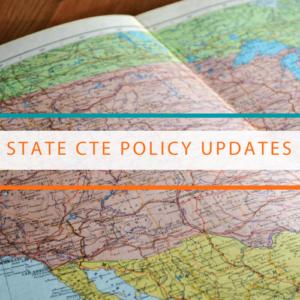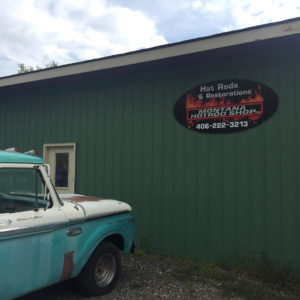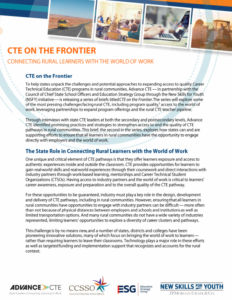In February, the American Indian Higher Education Consortium (AIHEC) hosted an event at the Senate Office Building to discuss innovative strategies, programs and ideas to address the key challenges impacting Native higher education. To unpack these challenges and strategies, the event featured panelists from colleges that primarily serve American Indian, Alaska Native and Native Hawaiian populations.
Much of the event focused on how Tribal Colleges and Universities (TCUs) are able to meet the needs of Native populations. Specifically, the panelists discussed how TCUs address barriers to access for learners. While TCUs are one of the most affordable postsecondary education options with an average annual tuition of $3,592, the cost of attending a TCU can still be a barrier to learners. To address this and transportation issues, Sitting Bull College in North Dakota provides tuition waivers and transportation to and from the college.
Core to advancing equity in Career Technical Education (CTE) and the broader education field is not only ensuring that students have access to CTE and education programs, but also taking action so that learners feel welcome in and can fully participate in education programs. Panelists emphasized how TCUs are able to create an inclusive environment for Native learners through providing intentional supports and preserving Native populations’ cultures. For instance, Ilisagvik College in Alaska developed a pathway program that places students in cohorts to help learners feel supported and part of the community.
Many of the panelists discussed the role language plays in creating an environment that students feel welcome in and can succeed in. In Hawai’i, learners can take courses taught in Olelo Hawaii, the Native Hawai’ian language, from infancy through doctoral programs. TCUs take approaches to ensure that Native languages continue to be commonly spoken in the community and the classroom. In Montana, Salish Kootenai College created an apprenticeship program that allows participants to become qualified in both Salish language fluency and effective teaching strategies to meet the demand for Salish language teachers.
The event ended with a discussion about changes that can be made to the Higher Education Act (HEA) to help support TCUs. Specifically, AIHEC proposes two new programs and modifications to two existing programs during HEA reauthorization:
- TCU Native American Language Vitalization and Training Program (HEA-Title III): This new program would authorize curriculum development and design; provide professional development for TCU faculty and secondary teachers; authorize Native American language research; and provide $20 million in competitive grant funding per year.
- Strengthening Graduate Opportunities at TCUs (HEA-Title III): This new program would authorize the development and enhancement of graduate-level professional certifications and degrees at TCUs; mentoring, scholarships and fellowships for students pursuing graduate certification and degrees at TCUs; curriculum development, faculty development and student research; and $5 million in competitive grant funding annually.
- TCU Facilities Study and Infrastructure Enhancement Program (Tribally Controlled Colleges and Universities Assistance Act [TCU Act]) : This update of the TCU Act would direct the Department of the Interior to report on TCU facilities; help support new libraries, classrooms, student and faculty housing; fund renovation and expansion of existing facilities; support equipment, broadband improvement, library collections; and provide $35 million in competitive grant funding per year.
- Federal E-Rate Program(Communications Act of 1934): This would designated TCUs as eligible to participate in the E-rate program, which provides discounts to help students and libraries secure affordable telecommunications and internet access.
Brianna McCain, Policy Associate


 As the legislative session moves forward, states have passed laws to increase awareness of and expand access to Career Technical Education (CTE) opportunities for each learner.
As the legislative session moves forward, states have passed laws to increase awareness of and expand access to Career Technical Education (CTE) opportunities for each learner. Livingston, Montana is a small ranching community of about 7,000, just north of Yellowstone National Park. Most of the town’s economic activity revolves around agriculture and tourism — being so close to Yellowstone brings in lots of travelers. Bozeman, which is about 30 miles away hosts a growing manufacturing and photonics industry. Despite these opportunities, students at nearby Park High School don’t always interact with industry leaders in the area, limiting their ability to explore different career options and weakening the talent pool for local business owners.
Livingston, Montana is a small ranching community of about 7,000, just north of Yellowstone National Park. Most of the town’s economic activity revolves around agriculture and tourism — being so close to Yellowstone brings in lots of travelers. Bozeman, which is about 30 miles away hosts a growing manufacturing and photonics industry. Despite these opportunities, students at nearby Park High School don’t always interact with industry leaders in the area, limiting their ability to explore different career options and weakening the talent pool for local business owners.
 nts at Tolsia High School in West Virginia have created an industry-validated carpentry business within their classroom. Students at Haynesville Junior/Senior High School in Louisiana are connected with physical therapists, diesel mechanics, a marriage and family counselor and other industry professionals on a biweekly basis through virtual “micro-industry engagements.” In North Dakota, nursing students can earn their associate’s degree through one of four community colleges, while taking their classes at rural hospitals and health care facilities. And in Montana, a mobile laboratory is deployed across the state to engage students around various career opportunities.
nts at Tolsia High School in West Virginia have created an industry-validated carpentry business within their classroom. Students at Haynesville Junior/Senior High School in Louisiana are connected with physical therapists, diesel mechanics, a marriage and family counselor and other industry professionals on a biweekly basis through virtual “micro-industry engagements.” In North Dakota, nursing students can earn their associate’s degree through one of four community colleges, while taking their classes at rural hospitals and health care facilities. And in Montana, a mobile laboratory is deployed across the state to engage students around various career opportunities.